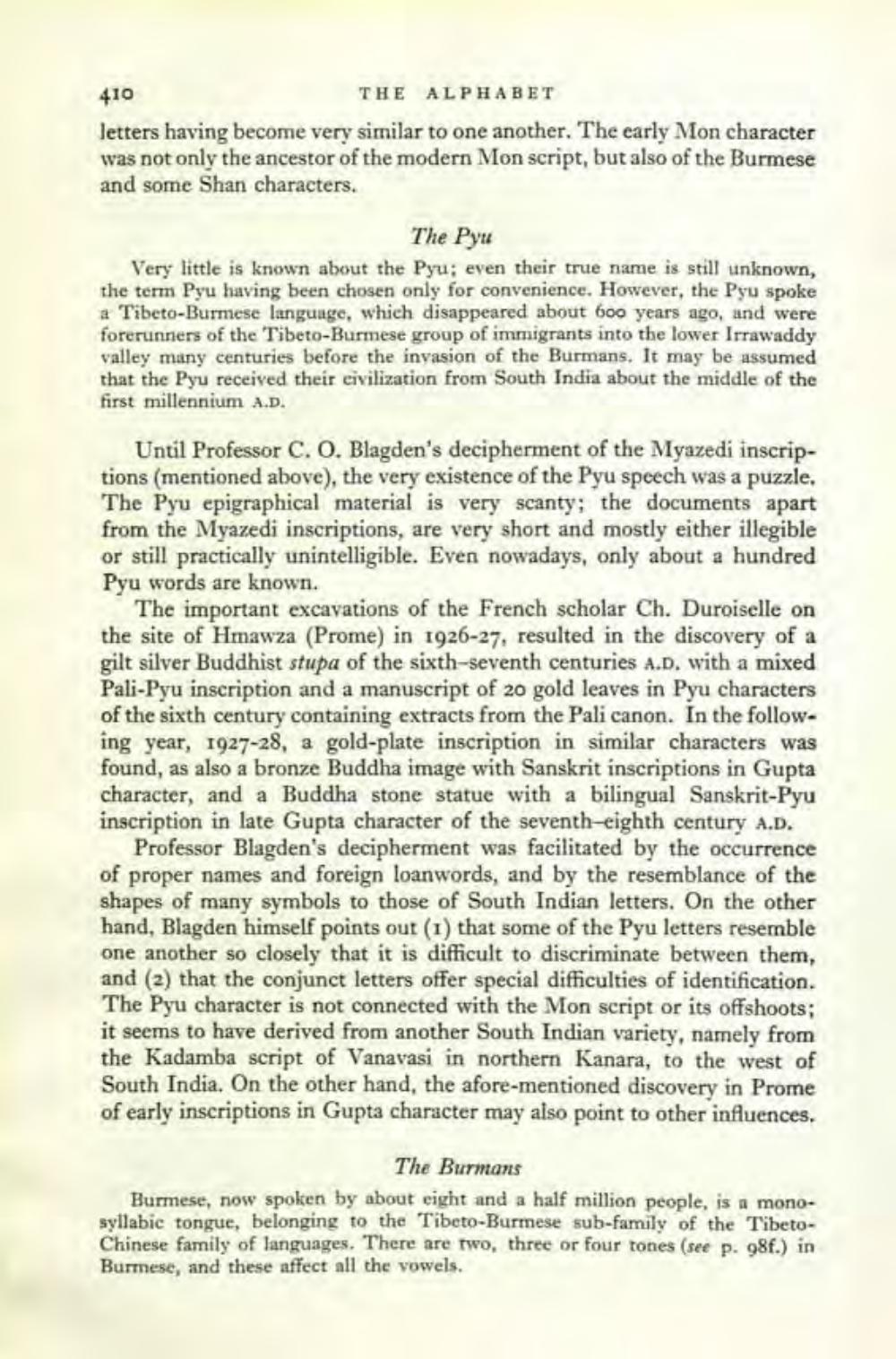________________
410
THE ALPHABET letters having become very similar to one another. The early Mon character was not only the ancestor of the modern Mon script, but also of the Burmese and some Shan characters.
The Pyr Very little is known about the Pyu; even their true name is still unknown, the term Pyu having been chosen only for convenience. However, the Pyu spoke a Tibeto-Burmese language, which disappeared about 600 years ago, and were forerunners of the Tibeto-Burmese group of immigrants into the lower Irrawaddy valley many centuries before the invasion of the Burmans. It may be assumed that the Pyu received their civilization from South India about the middle of the first millennium A.D.
Until Professor C. O. Blagden's decipherment of the Myazedi inscriptions (mentioned above), the very existence of the Pyu speech was a puzzle, The Pyu epigraphical material is very scanty; the documents apart from the Myazedi inscriptions, are very short and mostly either illegible or still practically unintelligible. Even nowadays, only about a hundred Pyu words are known.
The important excavations of the French scholar Ch. Duroiselle on the site of Hmawza (Prome) in 1926-27, resulted in the discovery of a gilt silver Buddhist stupa of the sixth-seventh centuries A.D. with a mixed Pali-Pyu inscription and a manuscript of 20 gold leaves in Pyu characters of the sixth century containing extracts from the Pali canon. In the following year, 1927-28, a gold-plate inscription in similar characters was found, as also a bronze Buddha image with Sanskrit inscriptions in Gupta character, and a Buddha stone statue with a bilingual Sanskrit-Pyu inscription in late Gupta character of the seventh-eighth century A.D.
Professor Blagden's decipherment was facilitated by the occurrence of proper names and foreign loanwords, and by the resemblance of the shapes of many symbols to those of South Indian letters. On the other hand, Blagden himself points out (1) that some of the Pyu letters resemble one another so closely that it is difficult to discriminate between them, and (2) that the conjunct letters offer special difficulties of identification. The Pyu character is not connected with the Mon script or its offshoots; it seems to have derived from another South Indian variety, namely from the Kadamba script of Vanavasi in northern Kanara, to the west of South India. On the other hand, the afore-mentioned discovery in Prome of early inscriptions in Gupta character may also point to other influences.
The Burmans Burmese, now spoken by about eight and a half million people, is a monosyllabic tongue, belonging to the Tibeto-Burmese sub-family of the TibetoChinese family of languages. There are two, three or four tones (see p. 98f.) in Burmese, and these affect all the vowels.




